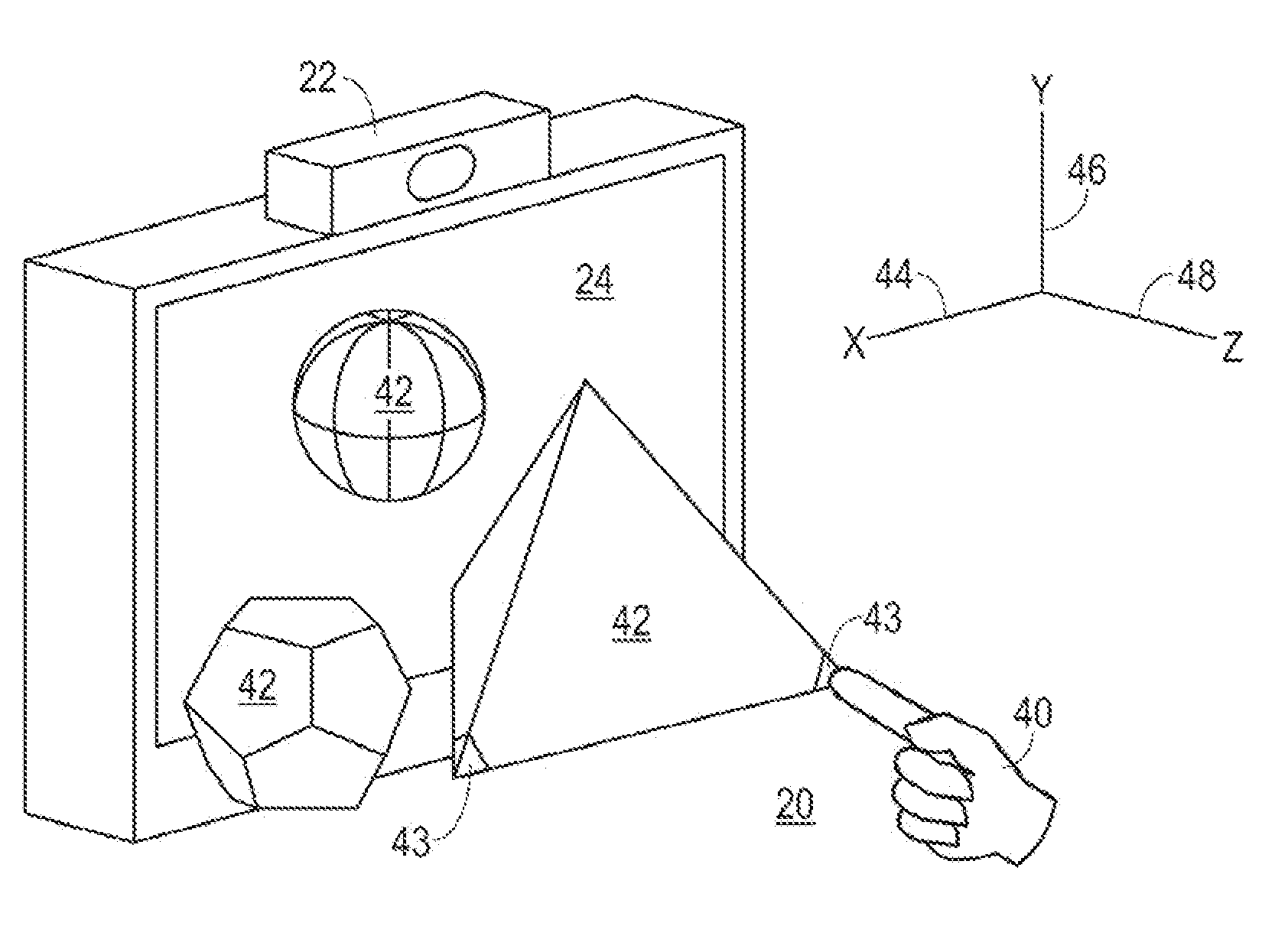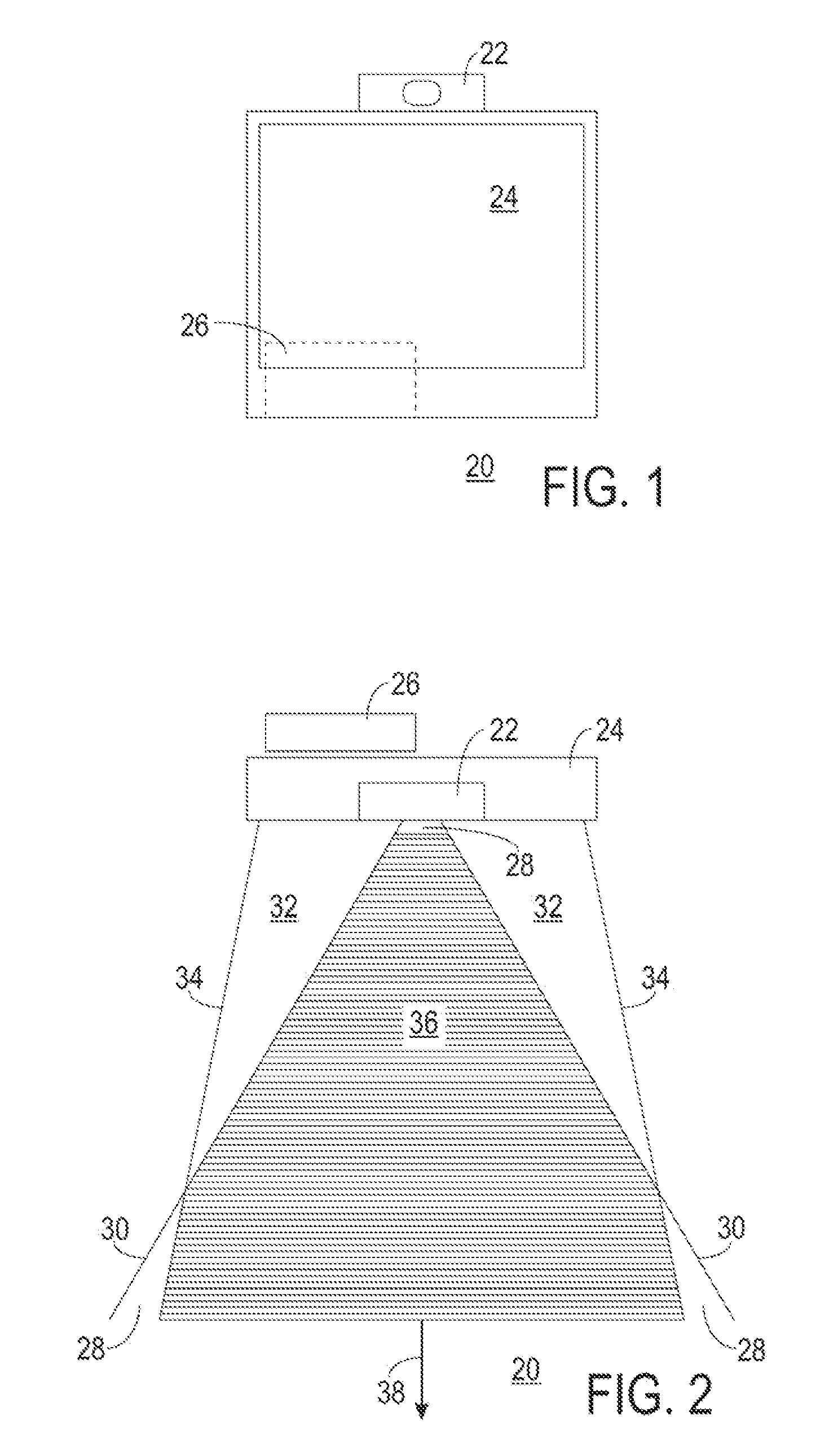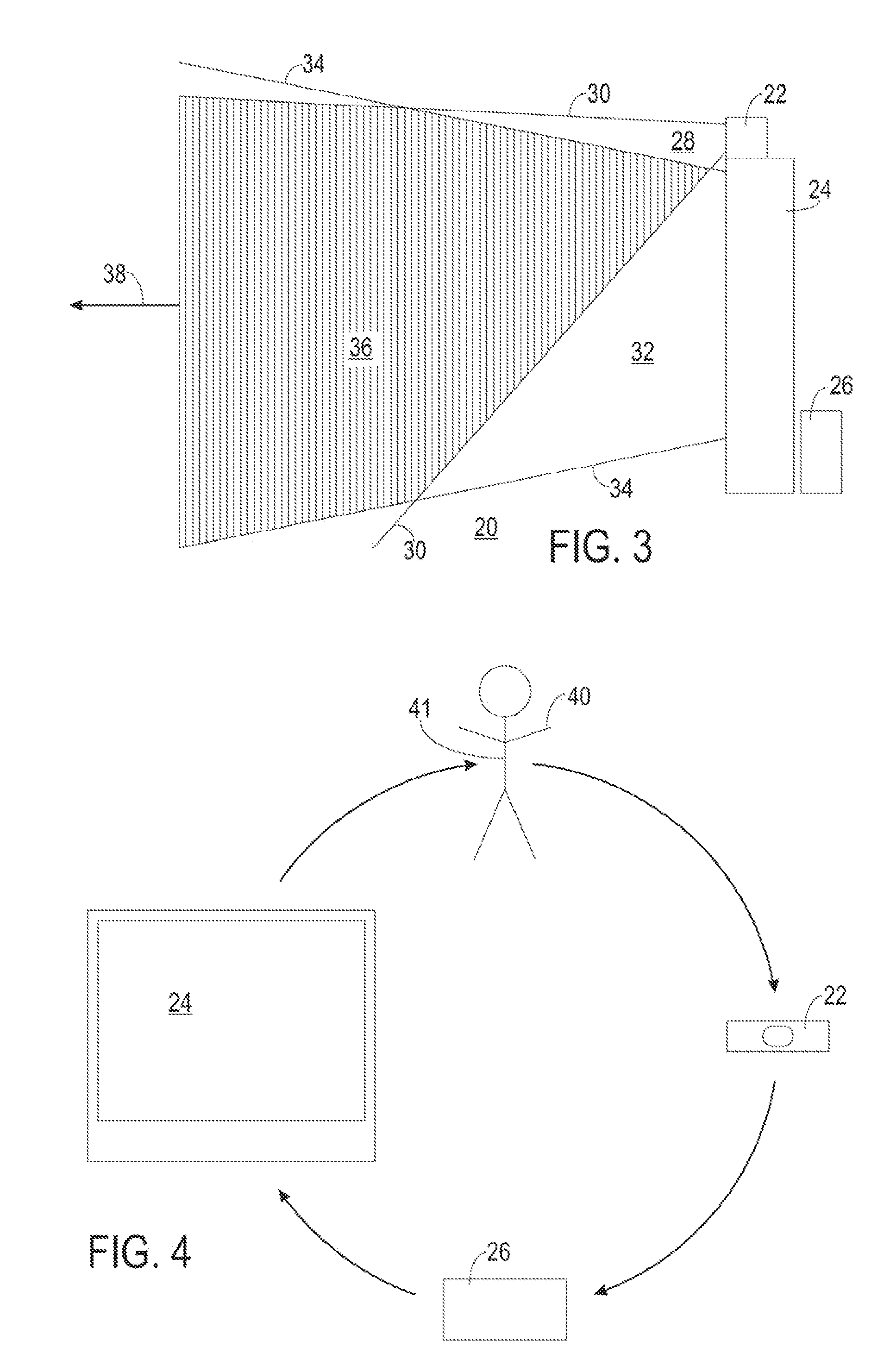Three-Dimensional Virtual-Touch Human-Machine Interface System and Method Therefor
a human-machine interface and virtual touch technology, applied in the field of human-machine interfaces, can solve the problems of preventing users from real-time virtual touch and interaction with images, and preventing users from real-time three-dimensional volumetric operation
- Summary
- Abstract
- Description
- Claims
- Application Information
AI Technical Summary
Benefits of technology
Problems solved by technology
Method used
Image
Examples
Embodiment Construction
[0025]FIGS. 1, 2, and 3 depict front, top, and side views, respectively, of a three-dimensional virtual-touch human-machine interface (HMI) system 20 in accordance with a preferred embodiment of the present invention. FIGS. 2 and 3 further demonstrate overlapping fields for a three-dimensional object-position sensor 22 and a three-dimensional display 24 of system 20. The following discussion refers to FIGS. 1, 2, and 3.
[0026] System 20 includes three-dimensional object-position sensor 22, three-dimensional display 24, and a computer 26.
[0027] Sensor 22 is a three-dimensional object-position sensor. That is, sensor 22 is configured to detect the position of an object in a three-dimensional sensor space 28. Sensor 22 senses the position of objects within sensor space 28 bounded by sensor field-of-view limits 30. Assuming that sensor field-of-view limits 30 are planes (not a requirement of the present invention), then sensor space 28 is substantially a truncated pyramid having a vert...
PUM
 Login to View More
Login to View More Abstract
Description
Claims
Application Information
 Login to View More
Login to View More - R&D
- Intellectual Property
- Life Sciences
- Materials
- Tech Scout
- Unparalleled Data Quality
- Higher Quality Content
- 60% Fewer Hallucinations
Browse by: Latest US Patents, China's latest patents, Technical Efficacy Thesaurus, Application Domain, Technology Topic, Popular Technical Reports.
© 2025 PatSnap. All rights reserved.Legal|Privacy policy|Modern Slavery Act Transparency Statement|Sitemap|About US| Contact US: help@patsnap.com



